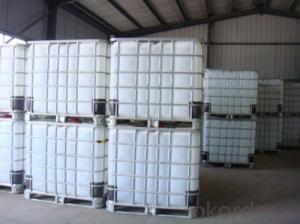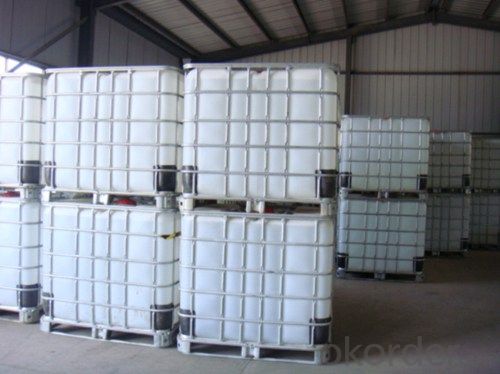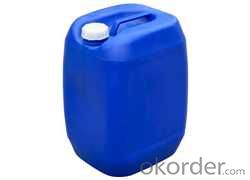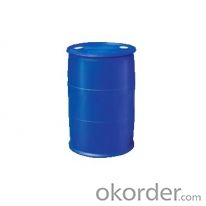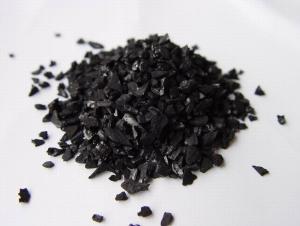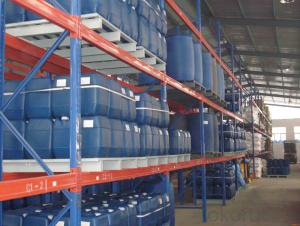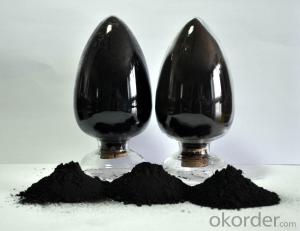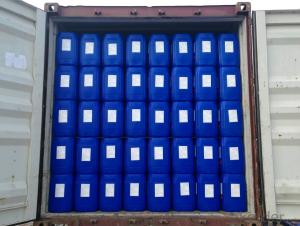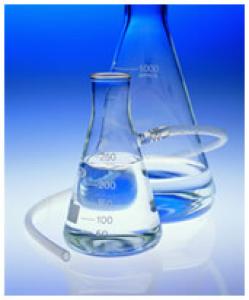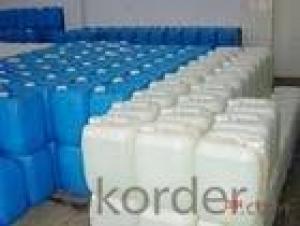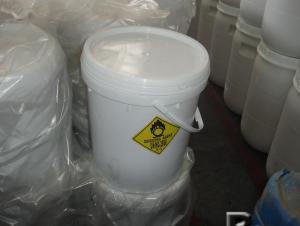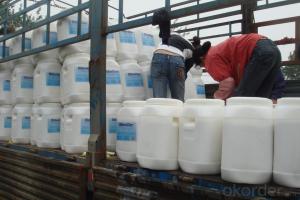formic acid industrial grade , factory direct delivery, made in China.
- Loading Port:
- Qingdao
- Payment Terms:
- TT OR LC
- Min Order Qty:
- 1 m.t.
- Supply Capability:
- 1000 m.t./month
OKorder Service Pledge
Quality Product, Order Online Tracking, Timely Delivery
OKorder Financial Service
Credit Rating, Credit Services, Credit Purchasing
You Might Also Like
Specification
colorless clear liquid:
pungent smell
Formic Acid
Popular name: Methanoic acid
CAS NO.: 64-18-6
EINECS: 200-579-1
Molecular formula: CH2O2, HCOOH
Formula weight: 46.03
InChI: 1S/CH2O2/c2-1-3/h1H,(H,2,3)
Melting point: 8.6 ℃
Density: 1.22
Water-solubility: Soluble
Physicochemical properties:
1.Colorless fuming flammable liquid and irritating dour.
2.Melting point: 8.6 ℃; Boiling point: 100.8 ℃; Flash point: 68.9 ℃
3.Solubility in water, ethanol and ether, slightly soluble in benzene
| Item | Specifications | |||||||||
|---|---|---|---|---|---|---|---|---|---|---|
| 99% | 94% | 90% | 85% | |||||||
| Superior | Superior | First-class | Qualified | Superior | Firs-class | Qualified | Superior | First-calss | Qualified | |
| Formic Acid, w/% ≥ | 99 | 94 | 90 | 85 | ||||||
| Colour /Hazen(Pt-Co)≤ | 10 | 10 | 20 | 10 | 20 | 10 | 20 | 30 | ||
| Diluting(sample+water=13) | clear | Clear | Pass test | Clear | Pass test | Clear | Pass test | |||
| Chlorides(as Cl),w/% ≤ | 0.0004 | 0.0005 | 0.001 | 0.002 | 0.0005 | 0.002 | 0.002 | 0.002 | 0.004 | 0.006 |
| Sulphates(as SO4),w/% ≤ | 0.0004 | 0.0005 | 0.001 | 0.005 | 0.0005 | 0.001 | 0.005 | 0.001 | 0.002 | 0.02 |
| Iron(as Fe)w/% ≤ | 0.0001 | 0.0001 | 0.0004 | 0.0006 | 0.0001 | 0.0004 | 0.0006 | 0.0001 | 0.0004 | 0.0006 |
| Evaporation Residues w/% ≤ | 0.003 | 0.006 | 0.015 | 0.02 | 0.006 | 0.015 | 0.02 | 0.006 | 0.02 | 0.06 |
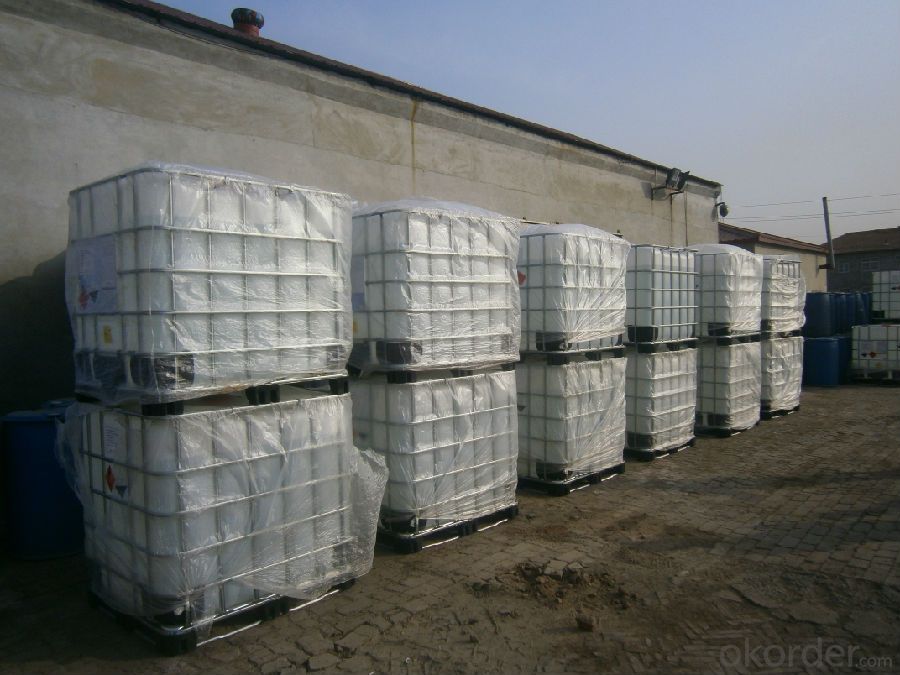
- Q: What are the catalysts for making oxygen in chemistry? (At least 8 listed)
- If the decomposition of hydrogen peroxide generated, as long as there are things that can be catalyzed by catalase
- Q: What is the effect of the catalyst in chemistry?
- In fact, the catalyst in the chemical reaction is not the reaction of the role, but to play a role in accelerating the speed of chemical reaction, it is like a reaction to an hour, but joined a certain catalyst, the reaction speed A lot, as long as half an hour to react to play, the catalyst as long as properly handled, but also can be recycled, the students do not have any chemical changes
- Q: What are the chemical reaction conditions in organic chemistry are catalyst and heating, please elaborate
- This really does not have omnipotent law, their own more than one point, you can classify to remember, when I was in high school is in accordance with the notes, such as poly, polycondensation and the like. In general, the double triple bond addition, plus halogen is not the conditions, plus HCl, HBr and the like to heat; dehydration reaction generally concentrated H2SO4 heating, dehydration condensation is also; there are some special, such as ethylene added to ethanol Special temperature requirements, it seems that 120 degrees, there are other; other addition poly, polycondensation some need catalyst. The The In short, the conditions are many, in general, you do not go to the high school to do more questions after the feeling, encounter problems do not panic general experience can come out according to experience, this also depends on the usual accumulation, if the equation conditions Wrong to deduct points, it is not worthwhile. There are some questions when the examination will give you some information, whether you know do not know should see clearly, although some of the reaction but the subject to the conditions are not the same, when you do according to the title to write conditions, this will not wrong. In addition, thank you for your help, I do not seem to know you
- Q: Seems intuitive that it wouldn't, but I dunno the qualitative difference between activation energy & Gibbs free energy. I'M TOO LAZY TO GOOGLE I GOTS STUFF TO DO
- A catalyst can change the activation energy not the Gibbs energy. The Gibbs energy is the energy difference between the initial state and final state. A catalyst cannot change that. Imagine you are driving from school to home. How you drive do not change the height difference between the school and your home. However, a catalyst can change your path which can change the routine you drive from school to home. So if there is a hill in between your school and you home, you have the choice to drive through it or drive around. Here is a picture: upload.wikimedia.org/wikipedia/co... A catalyst can change the height of the barrier, but cannot alter the initial or final state.
- Q: Could God be Discribed as a Catalyst?
- Whether we agree with them or not, many people are driven by concept of god(even those trying to disprove god). So, yes, at least in part, 1 could describe god as a catalyst.
- Q: How does active charcoal catalyze in some chemical reactions?
- Activated carbon is generally in the catalytic reaction to do more carriers, has not yet seen its catalyst to report.
- Q: High school stage which organic chemical reactions do not use catalyst
- Aldehyde and silver ammonia solution reaction, and the new system of Cu (OH) 2 reaction.
- Q: Chemical "catalyst can speed up the chemical reaction rate of other substances," this sentence right?
- Wrong, the catalyst is divided into two kinds, one is to speed up the chemical reaction speed, and the other is the opposite
- Q: If possible can anyone give me information on the active site, substrates, products, and the energy of activation as part of the answer?Responses greatly appreciated! Thankss! 10pts to best answer!
- Catalysts help shift the equilibrium of a reaction to one that is more favorable. They allow a naturally occurring reaction that may be extremely slow to progress faster or an unfavorable reaction to proceed forward. During the process catalysts are recycled, which means that at the catalyst is the same compound in the beginning and the end of the reaction, although during intermediate steps catalysts can change conformation. Catalysts shift the equilibrium of a reaction by lowering the activation energy of a reaction, which is the energy barrier which must be overcome in order for the reaction to proceed in a desired direction. This can be achieved in several ways such as providing favorable thermodynamic conditions for a reaction or creating intermediates which react more favorably to create the products. Inside the cell a lot of chemical reactions are either too slow to proceed naturally or are simply unfavorable. Catalysts help overcome those barriers. The substrate is the part of the reaction which gets transformed into the products after binding to the active site of the protein.
- Q: What kind of chemical reaction requires a catalyst?
- For example, the system of ammonia, S02 oxidation into SO3
Send your message to us
formic acid industrial grade , factory direct delivery, made in China.
- Loading Port:
- Qingdao
- Payment Terms:
- TT OR LC
- Min Order Qty:
- 1 m.t.
- Supply Capability:
- 1000 m.t./month
OKorder Service Pledge
Quality Product, Order Online Tracking, Timely Delivery
OKorder Financial Service
Credit Rating, Credit Services, Credit Purchasing
Similar products
Hot products
Hot Searches
Related keywords
